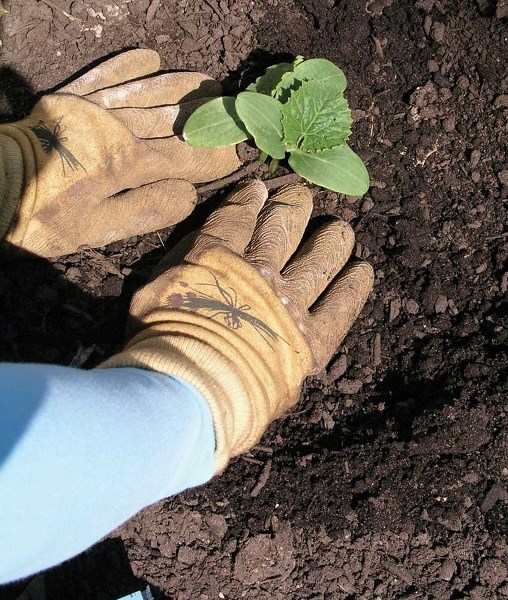For much of his life Dr. Ieuan Evans has examined the properties of soil but in spite of that love and study of all things earthen, he did not get mushy or even poetic about the stuff beneath his feet when he kicked off the St. Albert Botanic Park’s lecture series last week. Instead, Evans dished the dirt.
“People want to get all mystical and sentimental about soil and about it being the earth and all that. Rubbish! Soil is nothing more than a bunch of chemicals and there’s nothing romantic about it, if you just stick to the facts,” Evans said bluntly.
Evans is best known publicly for his hybridizing of lilies and for the development of the Evans cherry tree. But his career as a horticulturalist for Alberta Agriculture was focused on soil science and chemistry.
He brought that science with him to the botanic park along with several bags filled with soil samples and packages of commercial fertilizers. His theme was how to make the best garden soil possible.
He explained that the largest component of good soil is air space. Adding peat moss, grass clippings, manure and compost to the soil doesn’t add much fertilizer or nutritive value to the soil but all those organic compounds makes the movement of water and oxygen easier. Of them all, he prefers adding peat moss, and lots of it, as a soil amendment.
“Soil is nothing but crushed rock and rock doesn’t hold many nutrients. If the rock is finely crushed, you get clay. Peat holds up to 20 times its weight in water. That’s important in sandy soils but it’s also an excellent aerator for heavy clay soils,” he said.
At the same time, Evans pooh-poohed the notion that the world is running short of peat moss.
He stressed that over the last several hundred years the United Kingdom burned much of its peat reserves, and there is a shortage there. But even before the English used their peat for fuel, the British Isles had only one per cent of the world supply of peat moss.
On a global basis, 80 per cent of the world’s peat reserves are located in Canada, Russia and the United States and peat is now harvested in a way that allows it to grow again. It is a renewable resource, Evans said.
“The rate at which peat is harvested in Canada is estimated at 60 times less than which peat accumulates nationally. If that is not considered to be a sustainable utilization then nothing on this earth is sustainable,” Evans said, adding that the practice of using coconut husks as an alternative to peat moss makes no sense to him.
“Can you imagine how many coconuts would have to be grown and the resulting giant carbon footprint to ship those coconut husks around the world?” he said.
Most of the area around St. Albert has alkaline soil, although it does get more acidic as you travel west in the province, Evans said. That alkaline PH balance means local gardeners needn’t add bone meal to their gardens because it won’t decompose.
“Soil has to be quite acidic to decompose bone. If it won’t decompose, it’s ridiculous and expensive to add it. It’s the same with lime. In Wales gardeners add lime, because the soil is too acidic, but not here,” he said.
Other compostable materials, such as grass clippings, are excellent additions, especially in flower beds, because they add nitrogen to the soil.
“In a flower garden you can get away with just adding peat moss, compost and grass clippings but in a vegetable garden you still need fertilizer,” Evans said.
Evens recommended that for every bale of peat moss added to a vegetable plot, the gardener should also dig in a 10-pound bag of 10-10-10 fertilizer.
“And don’t get too hung up on the idea of using fertilizer because you think it’s not organic. Nitrogen in fertilizer is made by the high compression of air. That fixes the nitrogen in your fertilizer,” he said.
Evans’ Creating a Fertile Garden was just the first of a series of lectures that run every Wednesday from 7 to 9 p.m. until May 22 in the John Beedle Centre at the St. Albert Botanic Park.
• April 17: arborist Lillian Poirier of St. Albert Tree Corp will talk about pruning trees.
• April 24 Michiel Verheul of High Q Greenhouses will talk about container gardening.
• May 1 Murray Aspden of Canadian Tire will talk about yardscaping.
• May 8 long-time rose grower Richard Plain will talk about hardy and tender roses.
• May 15 Barry Greig of the Devonian Botanic Garden will talk about hardy perennials in your garden.
• May 22 Laurie Hepper, president of the Alberta Regional Lily Society will talk about Asiatic and Martagon lilies.
The cost per session is $20 for botanic park members and $25 for non-members. To register, phone 780-458-7163 or e-mail [email protected].




